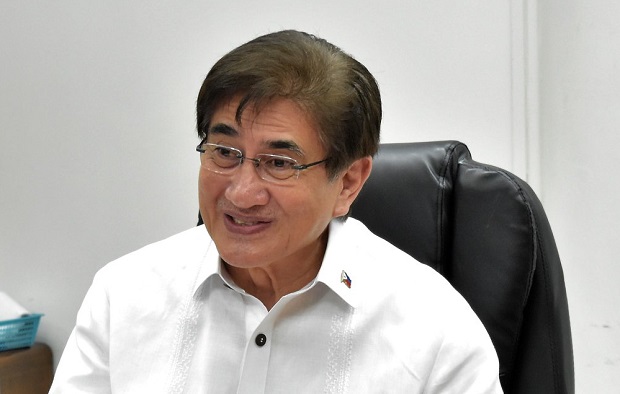After getting flak for saying that the current Internet speed at 3 to 7Mbps is “not so bad”, Department of Information and Communications Technology (DICT) secretary Gregorio Honasan II acknowledged that the country should aim for a higher standard.

“Of course, we need to aim higher and the country can definitely do better. No excuses; we take full responsibility for the current situation that our telecommunications and Internet connectivity are in,” Honasan said in statement on Saturday, Sept. 19.
Honasan said that while mobile Internet speed has multiplied in recent years, it can still go faster by improving the country’s fiber-optic cables and cell tower infrastructure.
“For practical purposes, one can already surf the Internet, use Facebook and YouTube, and make video calls with our current Internet speed. From time to time, I use my smart phone to check mobile Internet speeds in the areas I go to. Ginagawa din ‘yan ng ibang tao. May ibang lugar more or less nasa 3 Mbps, may ibang lugar naman more or less 7 Mbps. Kahit sino pwede sumubok nito,” he said.
Honasan said the average Internet speed has improved in the country in the past four years based on available data. Citing the Ookla Global Index, he said the Philippines has improved in Internet speed, marking a 216.94-percent increase in fixed broadband speed and a 127.82 percent increase in mobile Internet speed from July 2016 to July 2020. According to the data, the country now registers an average of 25.07Mbps and 16.95Mbps for fixed broadband and mobile Internet, respectively.
Based on online tech reviews, the average Internet speed suggested for video conferencing is around 1 to 4 Mbps, while standard definition and high-definition video streaming are around 3 to 4 Mbps and 5 to 8 Mbps, respectively. Voice over Internet protocol (VoIP) requires only 90 to 156 kbps.
However, the DICT chief said that country’s the biggest problem concerning digitalization remains the lack of ICT infrastructure, resulting in poor coverage across the country, leaving many with weak to no connection signal.
“We should not leave the fate of our national ICT infrastructure to the private sector only. It is high time for a government-owned network that’s built even in remote communities, not based on their market viability, but with a mission to provide equal opportunity for all. We owe it to our people. We owe it to our children,” Honasan said.
The DICT presented last week to the Committee on Appropriations of the House of Representatives its plans on further improving telecommunications and Internet connectivity in the Philippines, particularly the plan for a government-owned national fiber-optic network through the National Broadband Program (NBP).
The proposed a budget of around P18 billion is set to cover the Philippines by 2022 under the Program’s Phase 2. DICT assistant secretary Emmanuel Rey Caintic explained the proposed budget will speed up the lighting up of fiber-optic cables of the National Grid Corporation of the Philippines (NGCP) and the National Transmission Corporation (TransCo) across the country.
He added that the DICT can simultaneously install active components for fiber-optic cables in various provinces and deliver expected results in six to nine months given the requested funding. Part of the P18 billion will be spent on microwave radio towers which will be deployed in areas with no fiber-optic cables.
According to Caintic, Phase 1 of the NBP will be completed in early 2021. Using the 2019-2020 budget, the DICT is set to activate and connect the Cable Landing Station in Baler, Aurora to the NGCP node in San Fernando, La Union through the Luzon Bypass Infrastructure. Four DICT nodes and 15 NGCP nodes will also be activated.
“Maliit ‘yung NBP Phase 1 in terms of geography, pero ang kagandahan, abot mula Baler hanggang La Union, paikot ng Tarlac, Pangasinan, La Trinidad, Baguio, Region 2 and 3, hanggang NCR,” he explained.
The DICT is currently in talks with eight provinces regarding the establishment of provincial broadband networks that will be linked to the fiber-optic cables from the National Broadband Phase 1 implementation.
In perspective, the DICT said neighboring countries with similar initiatives, such as Indonesia, Australia, and New Zealand, have allotted significantly higher budgets for their National Broadband Network. Indonesia is reported to have allocated over $22 billion (P1.07 trillion) for its five-year national broadband plan, while Australia and New Zealand have allocated around $37 billion (P1.79 trillion), and $1.19 billion (P58 billion pesos), respectively.
Other countries, such as Singapore, are improving their systems by spending around $550 million (P26.72 billion) and opening up their network to all service providers. While the approved budget for NBP Phase 2 is around P902 million, approximately P17 billion more is required to build a fiber optic network that would encompass the entire country.




